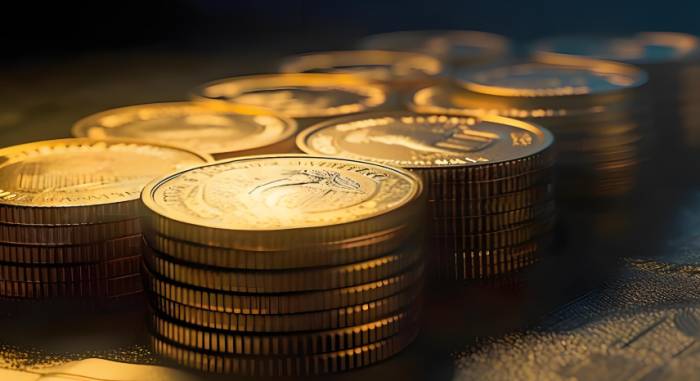Russia's Emergency Bank Move: Ruble's Future in Focus
The recent turmoil surrounding the Russian ruble has captured global attention as the currency plunges to alarming levels in the international market. On the morning of the 27th, the ruble faced a panic sell-off, with exchange rates gyrating dramatically. The ruble fell beyond 110 per dollar and dipped under 115 per euro, reminiscent of previous crisis moments experienced in March of 2022.
Since last Thursday, the ruble has lost significant ground, tumbling over 12% against the dollar and more than 13% against the euro. This rapid depreciation not only raises eyebrows among economists but also sends ripples of concern through international financial markets, highlighting the potential fallout of ongoing geopolitical conflicts.
In response to this currency crisis, the Central Bank of Russia swiftly intervened, announcing its intentions to halt foreign exchange purchases in the domestic market beginning on the 28th of this month until the end of the year. This strategic pause aims to stabilize the turbulent financial landscape, deferring the planned foreign exchange procurement until 2025. Additionally, the central bank will continue to conduct foreign exchange transactions linked to the National Welfare Fund to maintain some measure of market fluidity.
Advertisement
Following the announcement of these countermeasures, the ruble showed signs of recovery, nudging slightly up from 115 to approximately 108.04 against the dollar. Meanwhile, the ruble-to-yuan ratio stood around 14.83. However, the question remains: What is fueling this speed of decline?
The answer lies primarily in escalating tensions surrounding Russia's geopolitical landscape. The current strain on the ruble stems from sanctions imposed on key financial institutions like Gazprombank, a vital player in Russia's energy export sector. Recent sanctions have heightened the risk of Russia severing its natural gas trade with select Central European countries, leading to an unsettling apprehension about future energy payment transactions. Analysts, such as Alyosha, assert that this situation could potentially disrupt the international market for gas, oil, and associated financial instruments.
Prior to the latest developments, other countries, including Australia, Canada, New Zealand, and the UK, had already levied sanctions against Gazprombank. The European Union's stance on sanctioning the sole remaining bank facilitating Russian-European energy trade has been uncertain, leaving many financial experts in suspense. Russia's shift in payment mechanisms requires European buyers to make purchases in rubles through Gazprombank. This strategy has already led to gas supply disruptions, with Poland and Bulgaria experiencing cuts after refusing compliance, while Slovakia and Hungary still engage in trade with Russia via the sanctioned bank.
While the ruble fluctuated in value, Russian equity markets displayed mixed responses. On the 27th, the Moscow Exchange Index (MOEX Russia Index) experienced a 1.18% increase, particularly bolstered by the mining, oil, and gas sectors. However, prior to this uptick, the index had fallen to its lowest point in a year and a half during the previous trading session. The Russian Volatility Index, which measures implied volatility on the MOEX Russia Index options, surged to a yearly high, marking a 5.18% increase to 67.23, reflecting market apprehension.
As traders and analysts consider the long-term outlook for the ruble, many predict continued depreciation unless the ongoing conflict reaches a resolution. Some forecasters estimate that by the year's end, the dollar-ruble exchange rate could hit 115 to 120 rubles per dollar.
While a weaker ruble can benefit Russia's export-driven businesses, it simultaneously escalates the cost of imported goods, raising inflationary pressures in an already strained economic environment. According to Alyosha, the Central Bank of Russia has projected inflation expectations at 13.4% for November, consistent with rates from October. In a bid to curb unstoppable inflation, the Central Bank enacted its most aggressive rate hike in history, elevating the benchmark rate by 200 basis points to 21%. This decisive move was justified by the central bank to mitigate ongoing inflation risks and reposition economic stability.

Within the Central Bank itself, hawkish members are keeping an open mind regarding further interest rate hikes during the upcoming December monetary policy meeting. Despite previous attempts to bolster the ruble through interest rate adjustments, these measures have offered only temporary relief in the face of underlying fundamentals that continue to favor a depreciating currency.
One analyst pointedly noted, “Without a swift resolution to ongoing conflicts, the ruble is likely to experience continued depreciation." Diplomatic negotiations seem to be at a standstill, compounded by global economic downturns and shifting policies from entities like the Federal Reserve, causing many to perceive a dim future for the ruble in the medium term.
The International Monetary Fund (IMF) has also revised its economic forecasts for Russia, raising the prediction for growth in 2024 from 3.2% to 3.6%. Conversely, the IMF reduced its forecast for 2023 growth from 1.5% to 1.3%, attributing it to a tightening labor market and sluggish wage growth, which in turn dampens private consumption and investment. Additionally, the IMF projects average inflation in Russia for the year to be around 7.9%, nearly double the 4% target set by the Central Bank.
Post Comment